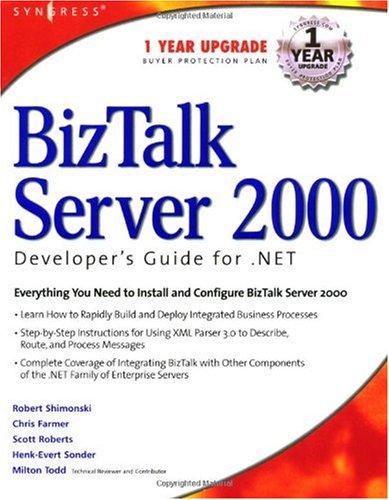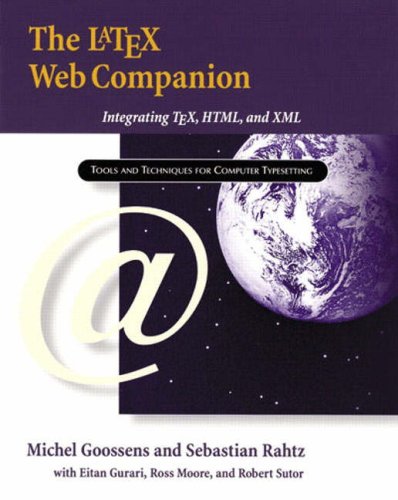Edward Insam9780750657358, 0-7506-57359
Table of contents :
Cover……Page 1
Statement……Page 2
Contents……Page 6
Introduction……Page 8
Why Network Embedded Systems?……Page 12
Special dedicated integrated circuit……Page 14
Dedicated CPU cores……Page 15
Common Methods of Networking……Page 16
Dedicated interfaces……Page 17
External Influences – Interference……Page 18
Multidropping……Page 19
Industrial Ethernet……Page 20
Domestic applications……Page 22
Alarm and security systems……Page 23
Voice over IP……Page 24
Other applications……Page 25
Development costs……Page 26
Learning curve……Page 27
Availability of peripheral and support devices……Page 28
Electrical and physical implications……Page 29
The technologies……Page 30
On standards and protocols……Page 32
On designing your own protocol……Page 33
Setting the Stage……Page 36
Some basic principles……Page 37
Concurrent Programming……Page 40
Threads and tasks……Page 42
Multithreading and multitasking……Page 44
RTOS responsibilities……Page 45
Semaphores and events……Page 47
Use in network communications software……Page 49
State Machines……Page 50
State tables and logic gate arrays……Page 53
High-level Languages and Resource-limited Devices……Page 54
Interfacing Issues……Page 56
A standard for physical layer interfaces……Page 57
Gate Arrays or Microcontrollers?……Page 58
What is a Protocol?……Page 62
The Standard OSI Layer Model……Page 64
Data link layer……Page 66
Network layer……Page 67
Transport layer……Page 68
Session layer……Page 69
Application layer……Page 70
Network access layer……Page 71
Host-to-Host or transport or service layer……Page 72
The IEEE 802 Model……Page 73
Bridging layer……Page 74
RFC – Obtaining Information on Standards……Page 75
Introduction……Page 76
Wide Area Networks……Page 77
PSTN, POTS and modems……Page 78
Computer interfacing to phones……Page 82
Digital voice networks……Page 83
DCE–DTE – wiring up a modem interface……Page 84
The AT command set……Page 89
Some basic networking concepts……Page 90
Wired technologies……Page 91
Driving the wire……Page 92
Wireless technologies……Page 97
Radio……Page 98
Infrared……Page 99
Low-level Encoding……Page 100
Non-return to zero (NRZ)……Page 102
Phase encoding (PE)……Page 103
Bit stuffing……Page 104
Block translation codes……Page 105
Multilevel codes……Page 106
Checksums and Error Protection……Page 108
Parity……Page 110
Polynomials……Page 112
Managing the Medium – Handling Collisions……Page 113
Wireless networks……Page 114
Ethernet and IEEE 802……Page 116
The data bit stream……Page 117
Frame structure……Page 118
Data payload……Page 119
Ethernet addresses……Page 120
Interface Devices for Ethernet……Page 122
Bus interfacing……Page 123
The line interface side……Page 124
The transmitter……Page 125
The receiver……Page 126
Squelch……Page 127
Auto-negotiation……Page 128
Reset……Page 129
Control registers……Page 130
Interrupts……Page 131
User bus interface……Page 132
Fast access……Page 133
Initialization……Page 135
Receiving a frame……Page 138
Using ready-made modules……Page 139
Wireless Technologies 802.11……Page 140
IEEE 802.11 architecture……Page 141
Overall network topologies……Page 142
The basic bit data format……Page 143
Complementary code keying modulation……Page 144
The 802.11b radio……Page 145
MAC processor……Page 148
Primitive level interfacing……Page 149
PCMCIA bus interfacing……Page 150
What is the Job of the Data Link Layer?……Page 152
Wide Area Networks – SLIP/PPP……Page 154
SLIP……Page 155
PPP……Page 157
PPP escape sequences……Page 158
PPP header compression……Page 159
PPP protocol field……Page 160
The PPP connection……Page 161
Option negotiation……Page 162
PAP packet format……Page 164
IPCP packet format……Page 165
Wired networks collision management……Page 166
Wireless network collision management……Page 167
Basic service sets (BSS)……Page 168
Extended service set (ESS) networks……Page 169
Frame types in IEEE 802.11……Page 171
Logical Link Control – LLC……Page 173
Address Resolution Protocol……Page 175
Internet Protocol……Page 178
The IP header……Page 180
The IP checksum……Page 183
Fragmentation……Page 186
IPv6……Page 187
ICMP……Page 189
Implementing ping……Page 191
UDP……Page 193
Implementing a simple UDP transaction……Page 196
TCP……Page 198
TCP header……Page 199
TCP states……Page 202
Connection establishment procedure……Page 203
Connection termination……Page 205
Established data f low……Page 206
Implementing a TCP transaction……Page 207
Common part – identifying a TCP segment……Page 208
Implementing connection establishment (receive)……Page 209
Implementing the established state……Page 210
Van Jacobson header compression……Page 212
Telnet……Page 214
Establishing a link……Page 215
Negotiating options……Page 216
Half/full-duplex……Page 217
Summary……Page 218
Electronic Mail……Page 219
SMTP……Page 220
POP3……Page 223
Summary……Page 227
The HTTP transaction……Page 229
Summary……Page 231
FTP……Page 232
Format……Page 233
Summary……Page 234
Format……Page 235
Format……Page 237
DHCP……Page 238
RTP/RTCP……Page 240
Format……Page 241
NTP/SNTP……Page 243
Format……Page 244
SCTP……Page 245
Concepts……Page 246
Format……Page 248
Introduction……Page 250
Software listings……Page 251
The ‘Main’ Program……Page 252
Direct hardware interfacing (helpers)……Page 254
Controller initialization and status sense……Page 255
Receiving data……Page 257
Data Link Layer……Page 259
Read the Ethernet header……Page 260
Sending ARP requests……Page 261
Network Layer – IP……Page 262
The IP handler……Page 263
Handling ICMP requests – ping……Page 265
UDP……Page 266
The UDP handler……Page 267
The TCP handler……Page 268
If a normal ACK segment was received……Page 269
Sending TCP data……Page 270
Software Listings……Page 271
Manufacturers Data Sheets……Page 310
Programming Techniques – TCP/IP……Page 311
Glossary……Page 312
Index……Page 324







Reviews
There are no reviews yet.